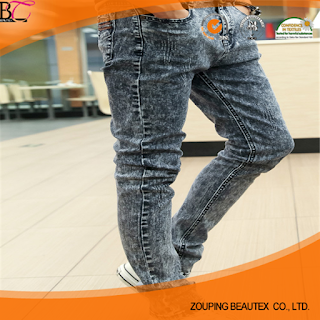What is Wrinkle?
A wrinkle, also known as a rhytide, is a fold, ridge or crease in the cloth or garments. Wrinkle
is a particular type of pressure in the finished fabric. It is produced
during finishing operations by the thickness of the seam used to join
pieces for processing. Wrinkle resistance in a fabric is a desirable
attribute, but it is not easily measured quantitatively. Wrinkle
resistance varies from quite low in many fabrics to very high in
resilient fabrics. In order to form a wrinkle, a fabric’s wrinkle
resistance must be overcome. The fabric may, however, produce strains
and store potential energy that can become evident as wrinkle recovery
under suitable conditions.
There are two types of wrinkle process:
- Permanent Wrinkle Process
- Overall Wrinkle Process
1. Permanent Wrinkle Process:
- Generally permanent wrinkle is doing on garments after all types of wet process wash in dry position.
- Permanent wrinkle is done on the garments made from all types of fabrics like, Denim, Twill,
- Canvas, Poplin, Corduroy, Knit & Polyester etc.
- For permanent wrinkle we are use resin which is spray on garments particular/specific areaby nozzle.
- Resin is diluted with water which is recommended by chemical supplier, generally 20% resin& 80% water.
- After resin spray on respective area, then fold by buyer demand and clip attached upon the folding area.
- Now hangers the garment in to the hanger trolley, Trolley capacity approx. 80-100 pcs garments.
- Then trolley with resin treatment garments put inside the Industrial oven.
- Set temperature 140°c to 160°c, Time 20-40 minutes (if folding layer is less,
- Less time required, if folding Layer is more, more time is required).
- Start the machine.
- When setting time is over, machines are automatically off.
- After heating time over garments with hanger will stay 10 minutes for cold in oven.
- Now open the door and trolley with garment out from oven.
- Open the clip from garment and go to quality section for quality checking & delivery.
- Generally overall wrinkle is doing on garments after all types of wet process & dry process

3d wrinkle denim
. - Overall wrinkle is done on the garment made from all types of fabrics like, Denim, Twill,
- Canvas, Poplin, Corduroy, Knit, Polyester, Viscose & Nylon etc.
- Now tie the whole garment in tight position by thread.
- For overall wrinkle, we are used resin in washing machine with water and run tied garments for 5 to 10 minutes at 50°c temperature.
- Then unload the garments from washing machine to trolley for hydro extractor to remove the excess water.
- Open the tie or cut the thread.
- Now hanger the garments into the hanger trolley. Trolley capacity appreciates 80-100 pcs garments.
- Then trolley with resin treatment garments put inside the Industrial oven.
- Set temperature 140°c to 160°c, Time 50-70 minutes.
- Start the machine.
- When setting time is over, machines are automatically off.
- After heating time over garments with hanger will stay 10 minutes for cold in oven.
- Now open the door and trolley with garments out from oven and go to quality section,checking & delivery.






